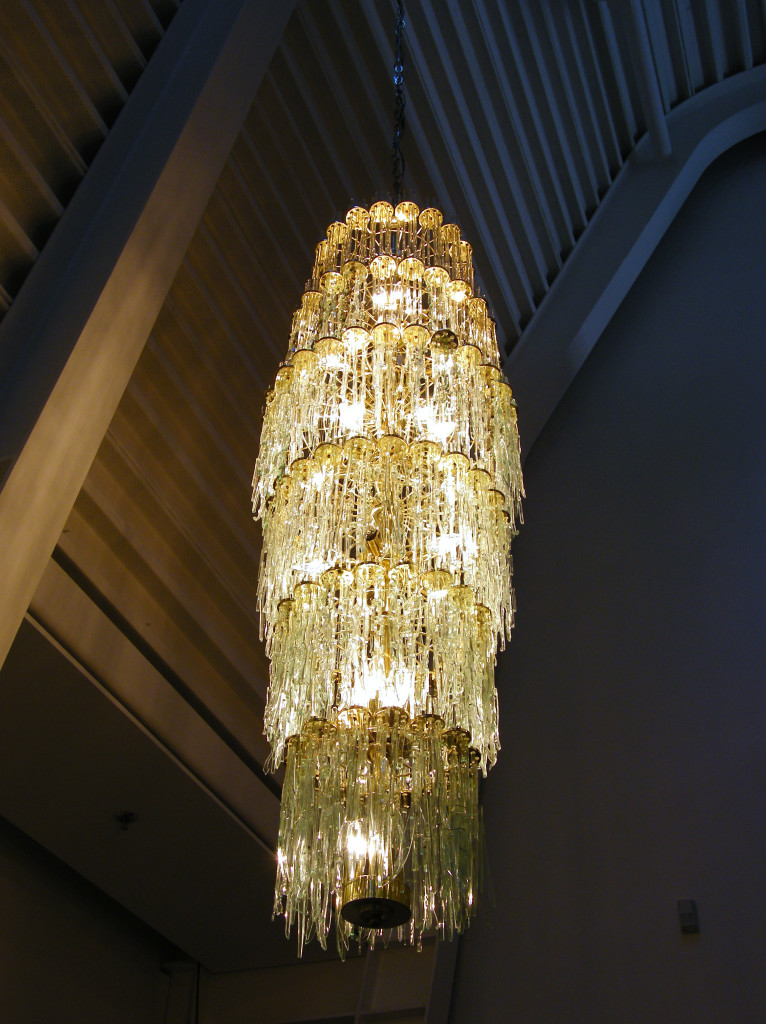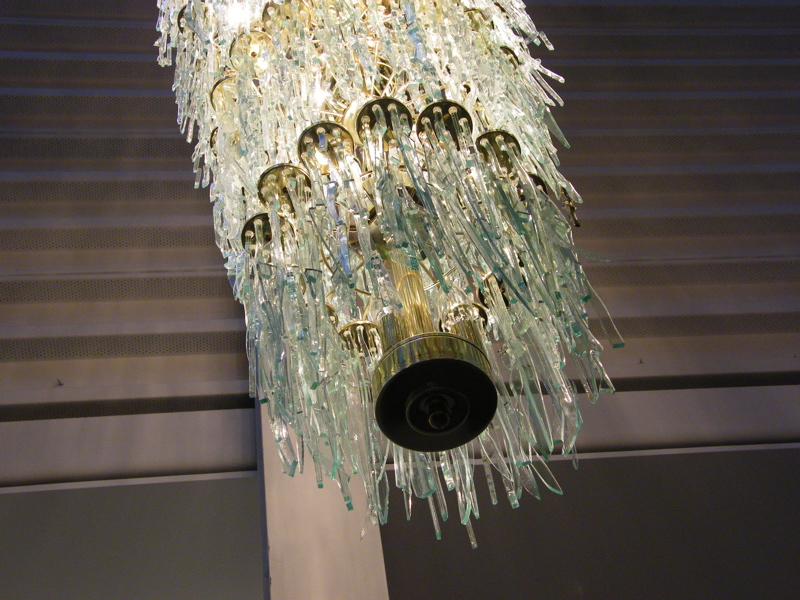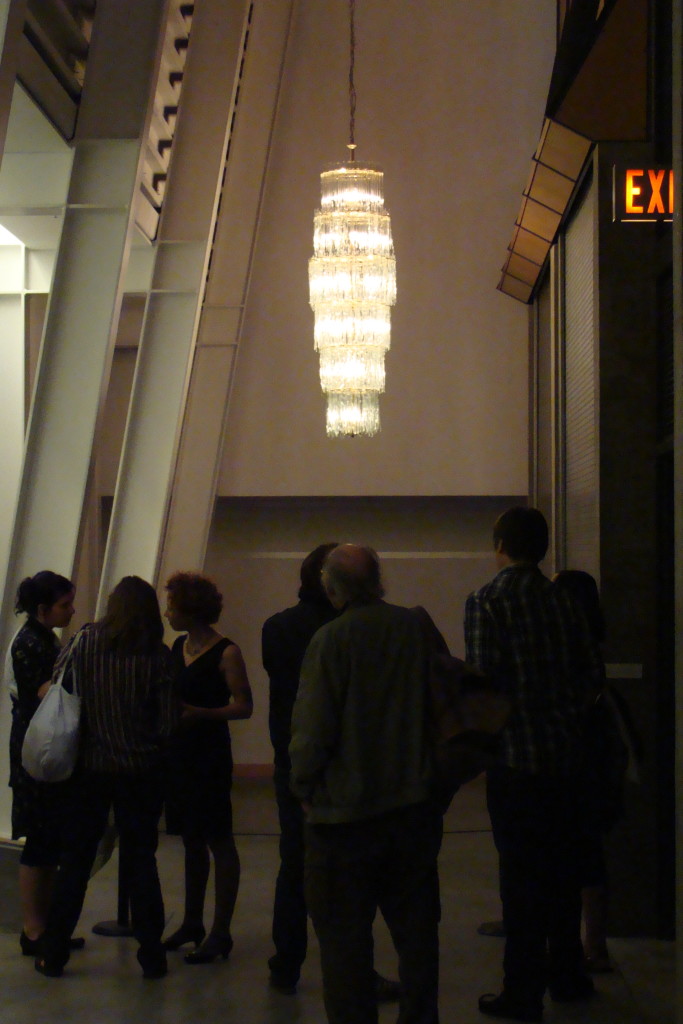Exhibition catalogue essay by Jerry Zaslove
from The Sooner the Better Late than Never UBC MFA exhibition, September 2008


Broken store window glass, chandelier armature, approx 8’x3′
Morris and Helen Belkin Gallery, 2008
Jesse Gray creates awareness of how natural substances appear in the world as artificial contrivances. When the artificial turns into artifices, mystery, magic and aura appear in our lives. This is play between the organic and inorganic -a great theme in 18th century iconography of the in-between world that is now owned by science and technology. We glimpse physical processes that seem held together by chemical and physical forces. These alive sculptures, or bricoleur work, remind of the old passion for collecting and hoarding of paleotechnology that makes organic materials useful and visible. But when these artificially derived products are molded into suburban chandeliers, the world of kitsch and the non-conscious invades suburbia as second-nature.
Gray’s resistance sculptures, miniaturized and intensified, speak optically and with tactile, controlled anarchy and reflect the process of mimesis. All nature is about collecting and mimesis reveals the dialectic of annexing materials by sculpting these materials into startling objects.
Collected, miniaturized and revamped materials are sculpted into objects that mime artificial light. This playfully transforms materials into non-conscious animated things that take on a life of their own. These deteriorate into value-less memory-less objects, almost the way photographs move from light to chemical to countless copies. Objects exchange their once-upon-a-time use value into surplus remnants from a city’s geological underbelly. By putting them to work again they speak to us about an uncanny power and will to become real again. The skill that remakes them brings them alive, animates them, plays with fragility and fear, and they become mini- dramas acting out nature against nature. But this fools us because their ‘essences’ derived from use-value are now camouflaged. In fact they camouflage their prior existence as first-nature by pretending to be first-nature acquiring second-nature – a chandelier!
The chandelier becomes an exemplum and novum of the domestication of second nature that decorates the entrance to the house as a hotel lobby. Sand and glass are the delivery system of light in suburban mansions where sameness is celebrated. But in Gray’s work they behave like stalactites hanging in the cave-like entrance to a suburban house.
Natural materials that camouflage their usefulness can bring on vertigo in the onlooker. The world of objects collected from nature appears to define itself against nature, even appearing as enemies of nature, mocking those flowers and insects that evolve through protective coloration and defenses. This mimetic process is also the dialectic in art-making. Hazarding an extended definition, the stalactites counterfeit chandeliers and build a protective shell that hides the process of its own making. The object comes alive as the will to happiness because kitsch promises happiness.
Glass is a substance that holds onto the aura of mimesis. By using materials that resemble glass objects, mimesis is staged as nature remaking itself with light bulbs. The electric medium hides in calcified materials. The chandelier escapes the suburban hallway and can no longer sustain its identity even in a dance hall. For the spectator, something fearful even painful has happened, the chandelier has become strings that “clump together on a line” as Gray described them to me.
Neither ceramics that have use-value, nor unmolded colorless clay, they hang from the caves of suburban households. The dialectic of first-nature and second-nature crystallizes the aura of light into a non-identifiable substance. The materials used in this manner act like proprioceptors and pick up and disseminate dead energy, and in this way the counterfeit chandelier that we once saw in a house and perhaps never thought of again reveals the energy hidden in its kitsch second nature. Thinking about it produces vertigo.
On another level of meaning, the objects speak to what it is like to live in the modern city in which discarded objects are found, salvaged, recycled and distilled. But the city is itself a discarded object living under the spell of second-nature capitalism. The modern city is a network of suburbs, a staging of the surfaces that camouflage what is going on inside the homes. These chandeliers not only stimulate our imagination about the nature of things by emulating stalactites, but also show us how we create things out of broken nature.
Copyright Jerry Zaslove, 2008.
